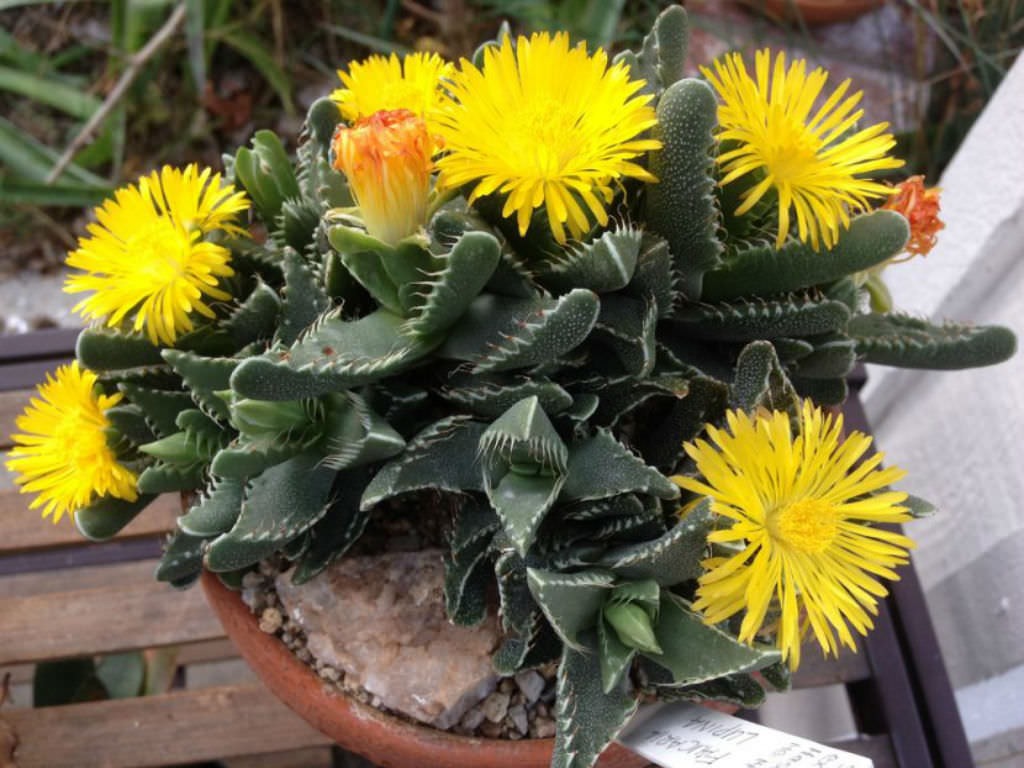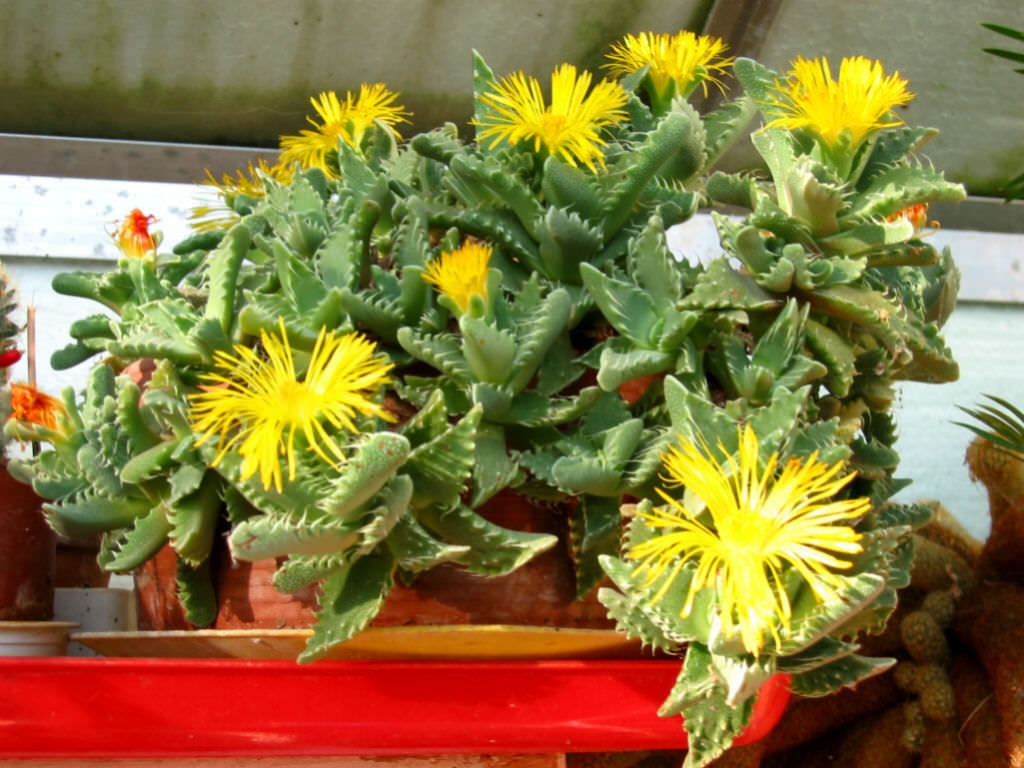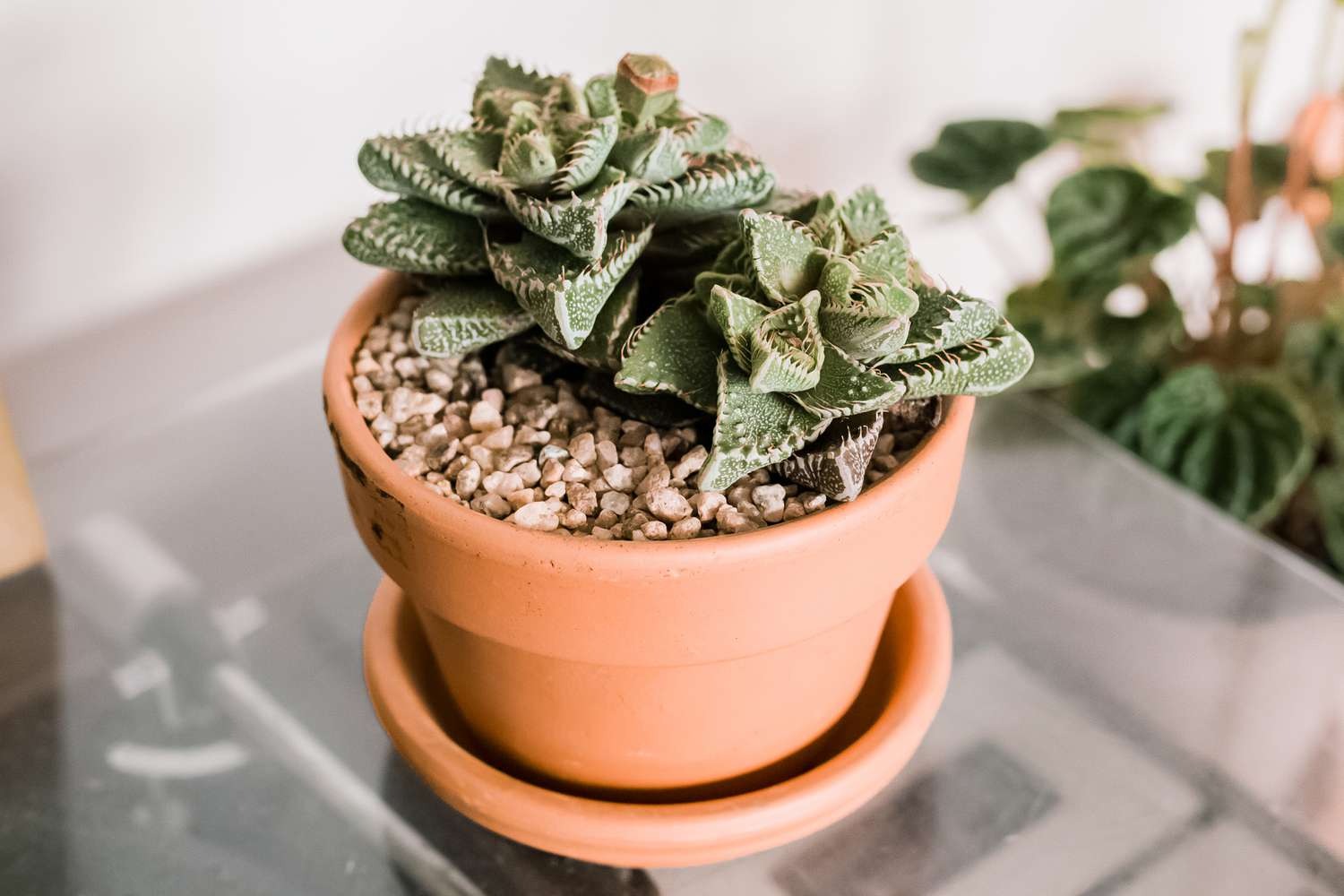Tiger jaws is a reliable, slow-growing succulent with low rosettes of fleshy triangular leaves bordered by prickly “teeth”, which got their name from the ferocious tiger’s beak. The tips are soft and flexible to the touch. The plant grows slowly, lives for many decades with proper care. An established plant will produce many lags that you can plant during Tiger jaws ‘ normal growing season in spring or summer.
Its botanical name is faucaria tigrina.
Dutch name Tiger Jaws, shark
cake family Aizoaceae
Type of perennial, succulent
mature height up to 6 inches. long, 10 cm. wide
Full and partial sun exposure
Moist, well-drained, loamy, sandy, clay soils
Acidic soil PH
Flowering autumn, winter
flower colour white
plant resistance zones 9, 10, 11
Region of Origin Africa
Tiger Jaw Care
Tiger jaws grow in the Eastern Cape province of South Africa and grow among the rocks and clay soils of the region’s subtropical deserts. Their growing season begins in spring and lasts all summer, and in autumn they show bright yellow flowers, although when grown indoors they rarely Bloom.
Tiger jaws can be a garden plant in warmer places, but most often they are grown in pots in rough, well-drained potting soil. In summer, it can happily grow in a patio or patio and withstand short-term frosts, but it should be brought indoors when winter cold approaches. The Tiger’s jaws are about 6 inches high and wide.
Tiger-jaw succulents are not susceptible to specific pests or ailments, but with excessive watering or exposure to too much moisture, they can easily develop root rot. The main signs of root rot are brown spots on the leaves and at the base of the plant, as well as spongy or soft leaves or stems. Give your juicy Tiger Jaws a bright and sunny spot in the house and they will thrive. The plant needs to be transplanted periodically, and at this point, the displaced plants can be removed around the base or planted separately as new plants in pots.

Light
Tiger jaws succulents are plants that love the sun and need at least three hours of bright direct light a day, and preferably six or more hours. Moving the plant outside in the summer will help to get the necessary light. Although Tiger jaws succulents rarely bloom when grown indoors, placing the plant in the summer will help increase the chances of flowering. Tiger jaws succulents can tolerate less light during the winter months, but they should always be placed in a bright place.
Solution
Like most succulents, Tiger jaw succulents need porous, well-drained soil to grow. In their natural habitat, Tiger jaws often grow in open rocky areas with clay soil. However, there is usually enough standard soil for indoor cacti. Some manufacturers believe that even the standard Cactus mixture contains too much moisture-retaining sphagnum moss, and they adapt the mixture for potted crops by adding additional chicken grains.
Or, you can prepare the perfect soil mixture for Tiger jaws by mixing 2 parts sterilized soil mixture, 1 Part fine pumice and 1 part sand.
Water
The sharp teeth of the Tiger’s jaw direct rainwater and dew to the base of the plant, where the roots can absorb it. A tiger plant can be picky about watering; it is not uncommon for a tiger jaw plant to die at night if it receives too much water that does not flow from its container. Water the Tiger plant only after it has dried. As soon as the soil is completely dry and the plant seems to shrivel, water it thoroughly and allow it to dry completely before the next watering.
The water tiger bites succulents more often during their growth period (from April to August). In autumn and winter, allow the soil to remain dry for a long time, and when watering, moisten the soil, rather than soak.

Temperature and humidity
In their native habitat in South Africa, Tiger jaws succulents grow in dry and warm conditions. However, they can also tolerate lower temperatures than many other types of succulents. The ideal temperature is considered to be around 68 degrees Fahrenheit, but they benefit from slightly higher temperatures (up to 90 degrees) in summer and will withstand even short-term frosts. But in the cold winter months, this plant should be removed from the terrace, unless you live in zones 9 to 11.
When grown indoors, tiger jaws succulents have sufficient average humidity in the house, but they should not be exposed to too much moisture (so the bathroom is probably not the best place for these succulents).
Fertilize
Tiger jaws succulents do not need regular feeding. In fact, too much fertilizer can lead to unbalanced and loose growth, making the plant look lumpy or broken. However, during the period of active growth (from April to August), Tiger-jaw succulents can be fertilized once or twice with diluted liquid fertilizer to support new growth.
Types Of Tiger Jaws
Another type of Faucaria, which is sometimes grown as a houseplant, is F. felina. It can also be called” Tiger Jaws”, but this plant has shorter and less ferocious teeth than F. tigrina. Otherwise, the plants are identical. Some commercial producers treat F. tigrina as a simple variety of F. felina, giving it the designation Faucaria felina “Tiger jaws”.
The spread of tiger jaws
Like aloe and haworthia succulents, Tiger Jaws succulents usually reproduce by separating the shoots from the main plant. It is best to propagate Tiger jaws during their active growth, in after spring or early summer.

By separating the offsets, you can get plants to which none of their own roots are attached. These compensations should not be immediately embedded in the soil, but instead they should be left Calluses before transplanting. After the base of the tree trunk hardens, it can be placed in the ground like an ordinary plant. Use the same type of soil that the mother plant likes—a mixture of cacti with a very rough/juicy taste.
Newly grown tiger-jaw succulents should be placed in medium light and watered less often as their root system develops. After a few weeks, they can be gradually brought into bright direct light and treated like an ordinary plant with a tiger jaw.
How to grow Tiger Jaws from seeds
Faucaria plants are also relatively easy to propagate by seeds (provided your houseplant blooms and gives them), but given the ease with which delays can be separated and the slow rate of seed growth, seed propagation is rare.
Tiger jaw or either
Tiger Jaws should be grown in shallow containers with very rough soil for cacti/succulents. These succulents grow slowly, and therefore do not require frequent transplantation. They should be transplanted only after they have outgrown the previous container-about every two years or so. You should also make sure that the pot you are using has good drainage holes, because Tiger Jaws succulents will rot if left in water.





Hi, this is a comment.
To get started with moderating, editing, and deleting comments, please visit the Comments screen in the dashboard.
Commenter avatars come from Gravatar.